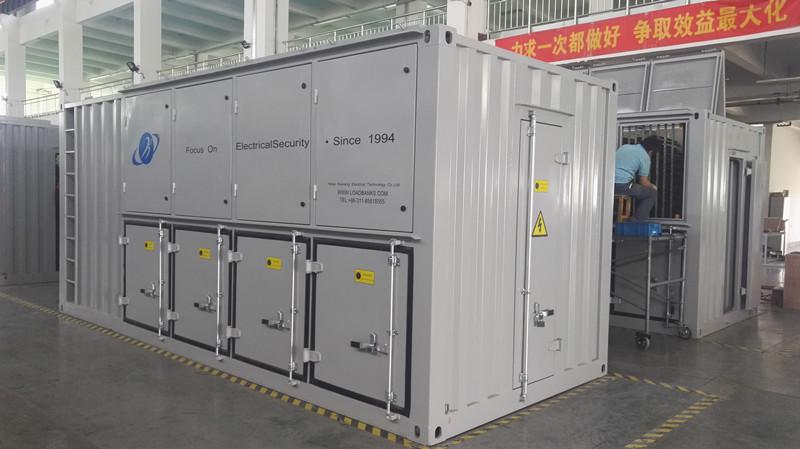Install and Use Fixed Load Banks
11KV 3000kW High Voltage Load Bank exported to one power plant in Australia in 2017
Adding a fixed load bank to a generator at the time of installation is much less expensive than retrofitting one. The principal reason for this is that it provides the opportunity to fit the unit in the air inlet between the radiator and the acoustic splitter. This means you can use the inlet for cooling, which will reduce long-term fuel costs as well as initial capital expenditure.
A further benefit is that, if you install a load bank in front of the radiator it does not make any additional noise because there is no extra cooling. However, if you fit one externally, you will need to measure the noise emissions to make sure it doesn’t exceed the environmental demands.
However, in most retrofit projects there is not sufficient space in front of the radiator to do this. As a result, the most convenient location is often the plant room, but in applications where space is at a premium, the roof of the building can also be used.
Another way of reducing capital expenditure is to use a single
load bank to test multiple generators, or multiple generators and a UPS, in sequence. Again, by considering testing at the planning stage, it’s easy to build this into the system.
In some cases, there is a further benefit in that the same load banks can be used as a ballast load during normal operation of the generating set. In those applications, where the connected load may vary over a wide range, either as a result of seasonal variations or the nature of the load itself, when the ‘real’ demand is small, it can be beneficial to add load to keep the engine operating at least at 20 to 40% of its capacity.
A third consideration for installing load banks is that if a load bank is incorporated into the set when it is built, the only addition needed to the control scheme is a load-sensing relay in the generator control panel.
Load banks for fixed installations are designed as an installations stage bolt-on addition to the set, requiring a space of only 400 to 800 mm between the radiator and the acoustic splitters.
The grids are assembled in banks with ceramic insulation rated for 1kV operation. The load bank makes use of the radiator airflow for cooling, making the basic design simple, low-cost and adaptable to almost any engine. Most standard generating sets in the 50 to 1000kW range have radiators with a free pressure loss of at least 125Pa so that a load bank can be added without the need for modifications to the basic design or an increase in the rating or cost of the acoustic splitters.
Where power ratings of more than 50% of a set’s capacity are required, or where a single load bank is installed to serve multiple generating sets, other cooling arrangements can be used. You can arrange for cooling systems to be used to existing plant room fans and supplied many such loads for these applications, with power ratings ranging from 5kW up to 2MW. Customers include generating set builders, contractors, and end-users themselves.

